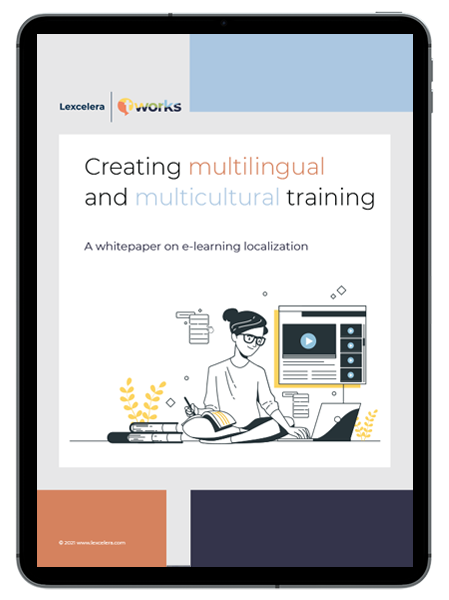
Let’s first look at what e-learning is and why it’s important. When companies do business internationally, their workforce, too, is global. While they can easily train their employees at headquarters through in-person sessions, the logistics of doing so at the global level becomes a little complex.
What is e-learning localization?
Enter e-learning, which allows companies to train their staff based anywhere in the world and bring them up to speed on the latest practices and rules and regulations in their industry as well as in the company. It helps in onboarding new employees quickly so that they become conversant with the workflow and start contributing to the team’s efficiency.
E-learning gives companies a lot of freedom and creativity in how they can design their training program and implement it. It also saves a lot of time and money for companies that would otherwise be spent on travel, accommodation, and other logistics.
The training program can be delivered completely online or in conjunction with any offline classroom sessions.
It can be asynchronous, meaning the student can take the course at their own pace. Or, it could be run according to an established schedule.
The content can be fixed and all the students take the same course, or it can be adapted to the needs of the individual learner. The program can also be designed to be interactive, allowing the student to communicate with the teacher.
E-learning localization
E-learning localization is the process through which the training program is rendered in the language of a specific locale and tailored to the students’ requirements. Consequently, it is more than just translation.
A well-localized training program takes care of many smaller details such as the right currency, date and time format, culturally acceptable themes, images, colors, body language, and so on. It does not in any way feel alien to the learner.
A training program includes text, user interface (UI) elements, video and audio, and different interactive elements. To localize it seamlessly, many different professionals have to come together: translators, editors, reviewers, project managers, subtitlers, dubbing professionals, and of course, developers.
Trends in e-Learning
Some irreversible trends have entered the e-learning industry. Being aware of these trends will help you build engaging learning content.
1. Mobile learning (M-learning). Learning on the go is here to stay, as more and more learners prefer to take courses on their mobile. Responsive design, hence, becomes mandatory.
2. Micro-learning. The ever-shorter attention span, not wanting to add further to the employee‘s to-dos, and taking up less memory space on the device are all factors that have spurred micro-learning. But this doesn‘t mean that you take the existing content, chunk it up, and serve it separately. Micro-learning means that you create small learning nuggets that are complete in themselves but are also connected with a larger theme.
3. Increased accessibility for all online learners. Some accessibility features such as transcripts and narration tools are great for every learner, regardless of any disability issue.
4. Gamification or game-based learning: Incorporating games into e-learning increases retention and learner performance. It adds fun to the learning experience and provides a sense of satisfaction upon completion of tasks and levels. It reduces distractions during learning.
5. Personalized learning: Learning is becoming highly individualized and interactive through the use of artificial intelligence (AI).
6. Virtual conferences: They have gained traction during the pandemic but have developed into a trend that is unlikely to go away as they are very convenient and save travel time and organization costs. If invitees are unable to attend, they can always turn to the recording.
7. Collaborative e-learning: It promotes interaction and facilitates networking.
8. Video-based training: Most people watch videos on their smartphones. Take advantage of this habit and deliver your learning content via video. Video learning allows the student to be in control of the pace. It engages the learners better. Learners can also be encouraged to create their own videos and upload them on a common learning platform.
Localizing a training program for employees around the world comes with certain challenges.
Vijayalaxmi Hegde











